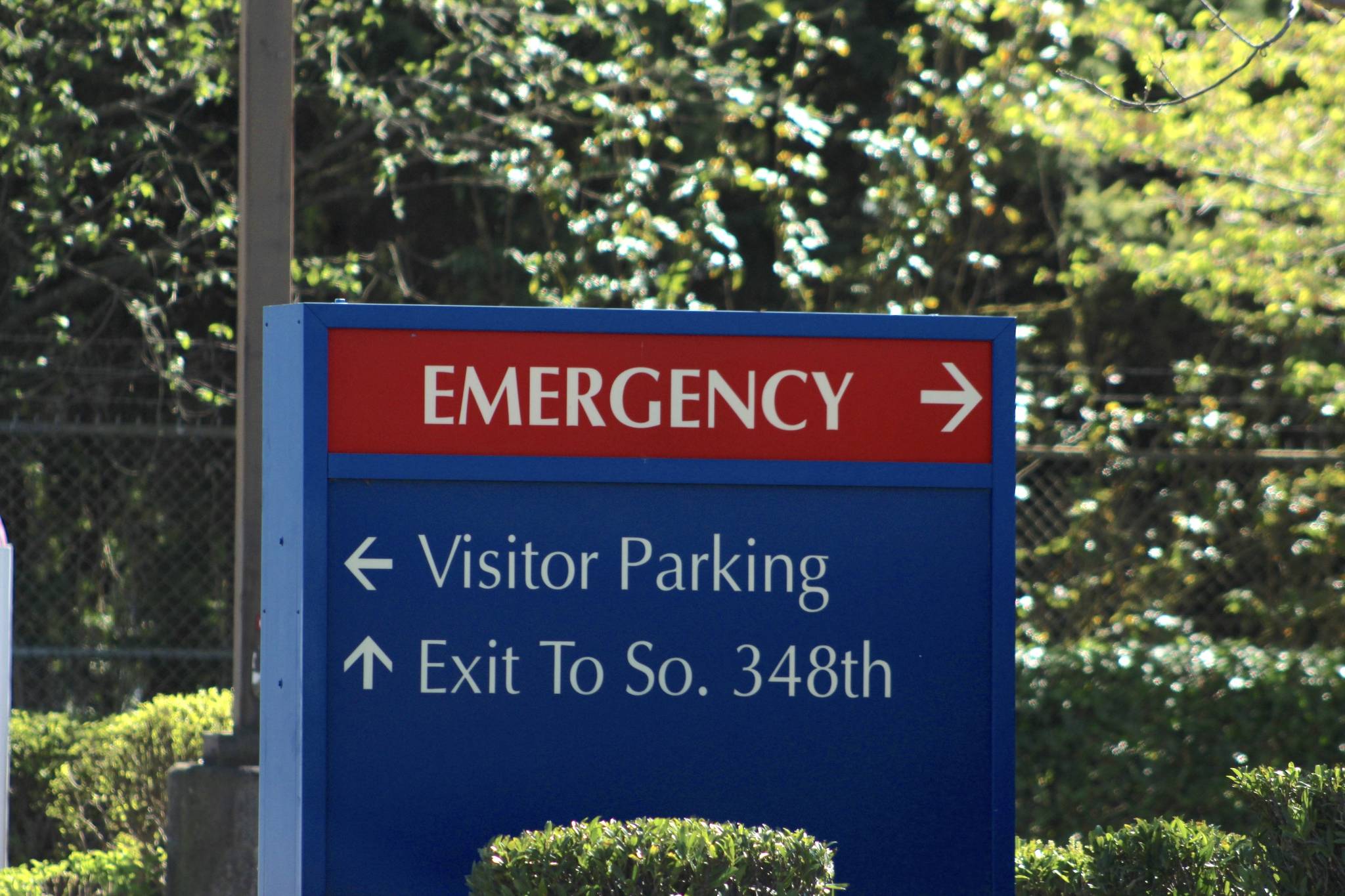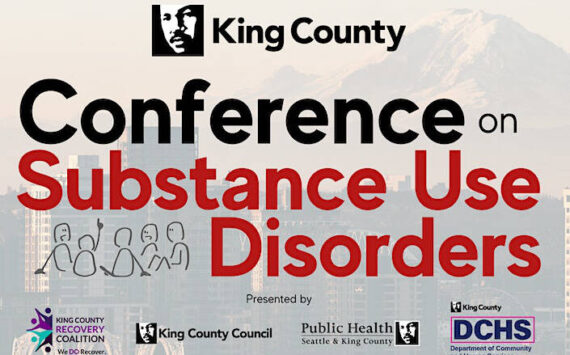Puget Sound-area emergency departments, from St. Elizabeth Hospital in Enumclaw to EvergreenHealth in Kirkland, are urging people to not avoid calling 911 when they’re experiencing a medical crisis, and that they should not be afraid of the coronavirus during their time there.
Since the start of the COVID-19 epidemic, many hospitals have seen a marked decrease in emergency department volumes likely because people are avoiding facilities, well, like the plague.
St. Elizabeth has seen a 30 to 40 percent decrease in volume, said Dr. Dan Himelic, emergency medicine doctor at the local hospital. St. Francis Hospital in Federal Way, also a part of the CHI Franciscan system, saw a similar decrease.
On average, St. Francis Hospital has the highest amount of emergency room visits of any facility in the CHI system with approximately 138 ER visits per day. System wide, CHI Franciscan has an average of approximately 848 ER visits per day.
EvergreenHealth in Kirkland was presumed to have the first COVID-19 patient death, a man in his 50s, in the United States on Feb. 29. Within a day, the Washington facility saw an immediate and steep decline in their emergency department visitors soon after news of the death went national, said Dr. Kevin Hanson, executive medical director of Emergency Care at EvergreenHealth.
“It was unique to us because our name was on the front of every newspaper in the country,” Hanson said. “… We were wearing the scarlet ‘A’ on our chest.”
Overlake Medical Center in Bellevue saw an immediate drop of nearly 50 percent in ER volumes; under normal circumstances, the center sees about 140 emergency room visitors, said Dr. Eric Shipley, the hospital’s emergency department director. In April, Overlake’s ER averaged 80 visitors. The end of March saw a low of 58 visitors and since March, the high point has reached 103 visitors to Overlake.
The reason behind this statewide decrease trend stands on two pillars, said Morgan Brice, Overlake’s senior media and public relations specialist.
There is a fear of becoming infected with the virus at the emergency room, and people are also afraid the emergency rooms are overflowing.
“Neither are true,” Brice said.
THE CONSEQUENCES OF WAITING
The lack of visitors in emergency departments doesn’t mean other life-threatening conditions aren’t occurring; it just means people are trying to tough it out.
“You can still have heart attacks, burst appendixes, pneumonia, and other things that occur, and the hospital is doing everything it can to make sure that when you show up at the hospital, you’ll be treated in a fast, safe environment with minimizing risk of other things occurring,” Himelic, of St. Elizabeth, said.
According to the King County Fire Chief’s organization, King County has seen a 25 percent decrease in the number of “serious health conditions” calls since the pandemic started, it said in a May 12 statement.
And it’s not just a King County, or even Washington, phenomenon — according to a May 6 NPR article, it’s estimated ED volumes are down 40 to 50 percent across the nation, adding that clinical stroke centers have seen an “unprecedented” 50 to 70 percent reduction in patients.
It’s dangerous to delay care for heart attacks and strokes, Himelic continued; speed is everything when it comes to being able to heal well and not develop a serious disability.
“If someone is having a heart attack and they don’t seek care, even if they make it through their heart attack, they’re going to have a lifetime of issues. Their heart’s not going to be as strong as it was prior,” he said. “Or if they have a stroke and they don’t show up in time, they might have lifetime issues with word-finding difficulty, or not being able to use their hands, or having problems walking. Those things are very time sensitive… if you delay care, you’re going to live with a lifetime of disability/recourse from that.”
Warmer weather and the summertime season usually brings an influx of traumatic injuries as more people are enjoying outside activities, such as biking or running. Last year, the local facilities also saw hundreds of influenza cases.
“Just because this pandemic is happening doesn’t mean other illnesses will go away,” Brice said.
With more people staying indoors and less drivers on the roads, hospitals have also seen a decrease in car accident victims. People with heart conditions, stroke symptoms, high blood pressure or diabetes are of the utmost concern, many of the doctors said, because waiting too long for help can be, and frequently is, fatal.
St. Francis emergency medicine physician Dr. Chris Staley warns people not to put off critical care because the aftermath could be much worse.
“Rather than being treated, the consequences [of waiting] can be a more complicated recovery, prolonged side effects and the chance of mortality is increased,” Staley said. “There’s a good chance if you saw us early, you’d be going home but if you see us later when you’re sicker, there’s more consequences.”
Recently on Mother’s Day, EvergreenHealth saw a spike in emergency room visitors, Hanson said.
As many families visited loved ones from a safe distance, Hanson concluded “it’s like everybody realized mom has been sick for a while” and brought loved ones to the hospital for care.
There is a much greater concern for the elderly population delaying care because these individuals often become sick more frequently, are on more medications and have more health conditions than younger people. Older individuals are also less likely to use telehealth visit options.
Although elders are the ones often not seeking care, they’re the population needing the most care, Hanson said.
‘IT’S SAFE TO BE SEEN’
Collectively, the Washington State Hospital Association launched a campaign to address the emergency room avoidance. While staying home has saved lives, the association says they have seen consequences of staying away from healthcare.
By putting off emergency care, medical professionals across the state have seen complications such as preventable serious infections due to neglected broken bones or deep cuts to individuals making themselves more vulnerable to COVID-19 by not managing chronic conditions.
Across the association’s 112 member hospitals, increased screening, cleaning, separating patients and use of protective gear/masks have been implemented for the safety of all who enter the facilities.
Hospitals around the region have implemented new health rules, regulations and processes in response to the COVID-19 crisis for the safety of those who visit the hospital for any reason.
Himelic said St. Elizabeth has myriad safety measures to keep people as safe from COVID-19, starting first by limiting entrances and the 24/7 presence of screeners at those that are left.
Then there’s the testing, which happens to everyone, regardless of whether the patients are showing symptoms.
“If you come in and you have a fractured ankle because you fell off a two-story roof and you need to stay in the hospital for surgery, you’re going to get tested for COVID,” Himelic said. “You might have been living in a cave that you built yourself for nuclear war and you haven’t seen anybody in two weeks — you’re still going to get tested for COVID.”
Patients that test positive, or even patients that test negative but are showing symptoms of the virus, are placed in isolation away from other patients. The rooms they’re placed in are called negative airflow rooms, which forces air through a filter that’s regularly changed so infected air doesn’t seep out into the rest of the hospital.
Patients aren’t just tested when they’re admitted, either. If there’s any change in symptoms or condition, families and loved ones are notified and the patient is re-tested.
After patients are discharged, Himelic continued, their rooms aren’t just wiped down with Lysol — it’s a deep cleaning process.
“There’s a certain amount of time we wait, and then there’s a special cleaning procedure that’s done to those rooms,” he said. “We don’t back-to-back them.”
Staffing isn’t an issue, either. Although St. Elizabeth Chief Operating Officer Renee Yanchura wrote in an April 15 letter that administration and management will have to take pay cuts and be temporarily furloughed, and staff may also have to be temporarily furloughed.
“For the emergency department, we haven’t cut an hour of nursing coverage that was there. We still have the same amount of nurses that are on the schedule prior to COVID-19,” Himelic said. “One of the ED managers took a two-week furlough, they’ve asked nurses if they’d like to furlough… but from my understanding, I haven’t heard anybody take that furlough.”
“There might be someone on call, instead of being there, but in terms of numbers of our staff, that’s been the same,” he continued.
At Overlake, the biggest shift in the hospital’s system has been the redistribution of staff with fitting skill sets to areas with critical need.
For example, as elective surgeries were postponed under Gov. Jay Inslee’s state-wide shutdown, an elective surgery nurse may be moved to the critical care unit to assist with the high volume of patients.
All hospitals have implemented temperature screenings for staff and visitors, and a heightened focus on deep cleaning rooms, equipment and personnel.
Many facilities also have procedures in place to eliminate the exposure of a COVID-19 positive patient to any other patients by calling ahead, waiting in their cars instead of any lobby areas, and arriving through a separate entrance, in addition to other Overlake guidelines which Brice calls “a well-thought process” of protocol for how patients are cared for from the very first step.
One key resource to saving lives has been the option of telehealth virtual consultations done via phone or computer, which allows patients to consult with a medical professional from the comfort of their own home.
To date, EvergreenHealth has connected with new patients for over 8,500 appointments.
Beyond telehealth visits and appointments without waiting rooms, EvergreenHealth also offers a free 24/7 Nurse Navigator Healthline. Available to anyone in the state, people can call day or night to speak with a registered nurse at no charge to discuss their symptoms and either learn what they can do at home to manage, or whether they need to seek further primary, urgent or emergency care.
The unanimous message shared by the local hospitals is simple: it is safe to be seen.
“I hope that they know they’re safe in our care,” Brice said. “They have been, they will be — that continues.”
More information about St. Elizabeth’s safety measures, and the safety measures being taken by all CHI Franciscan hospitals, can be found at chifranciscan.org.
For information on Overlake Medical Center visit overlakehospital.org or for the safety guidelines of EvergreenHealth, visit evergreenhealth.com/continuing-your-care.








